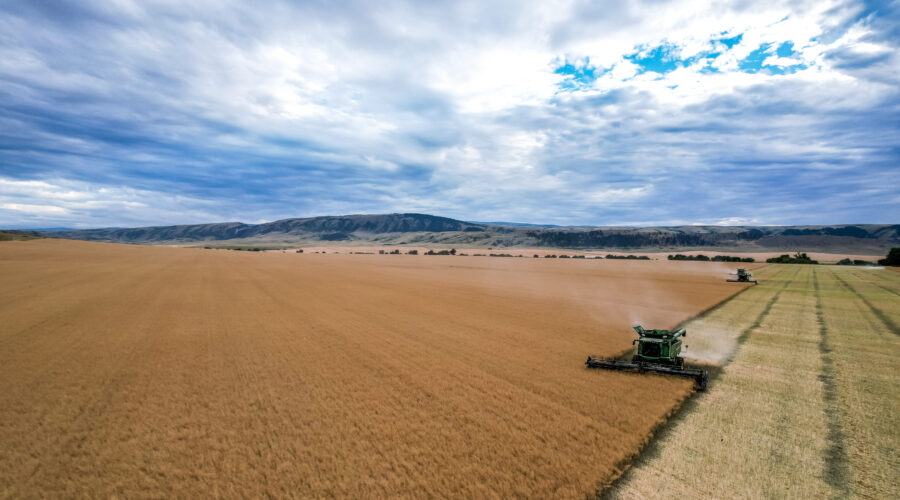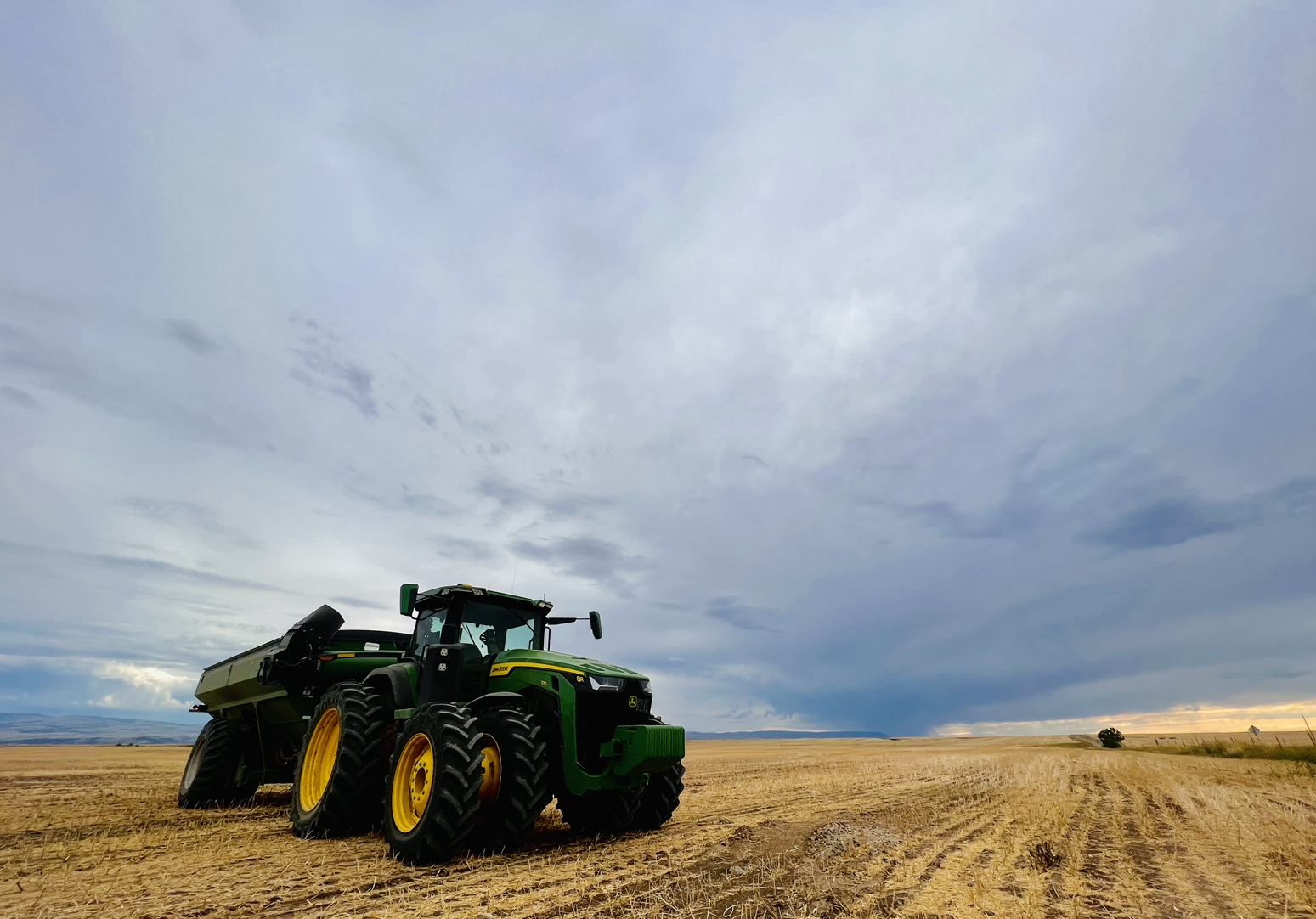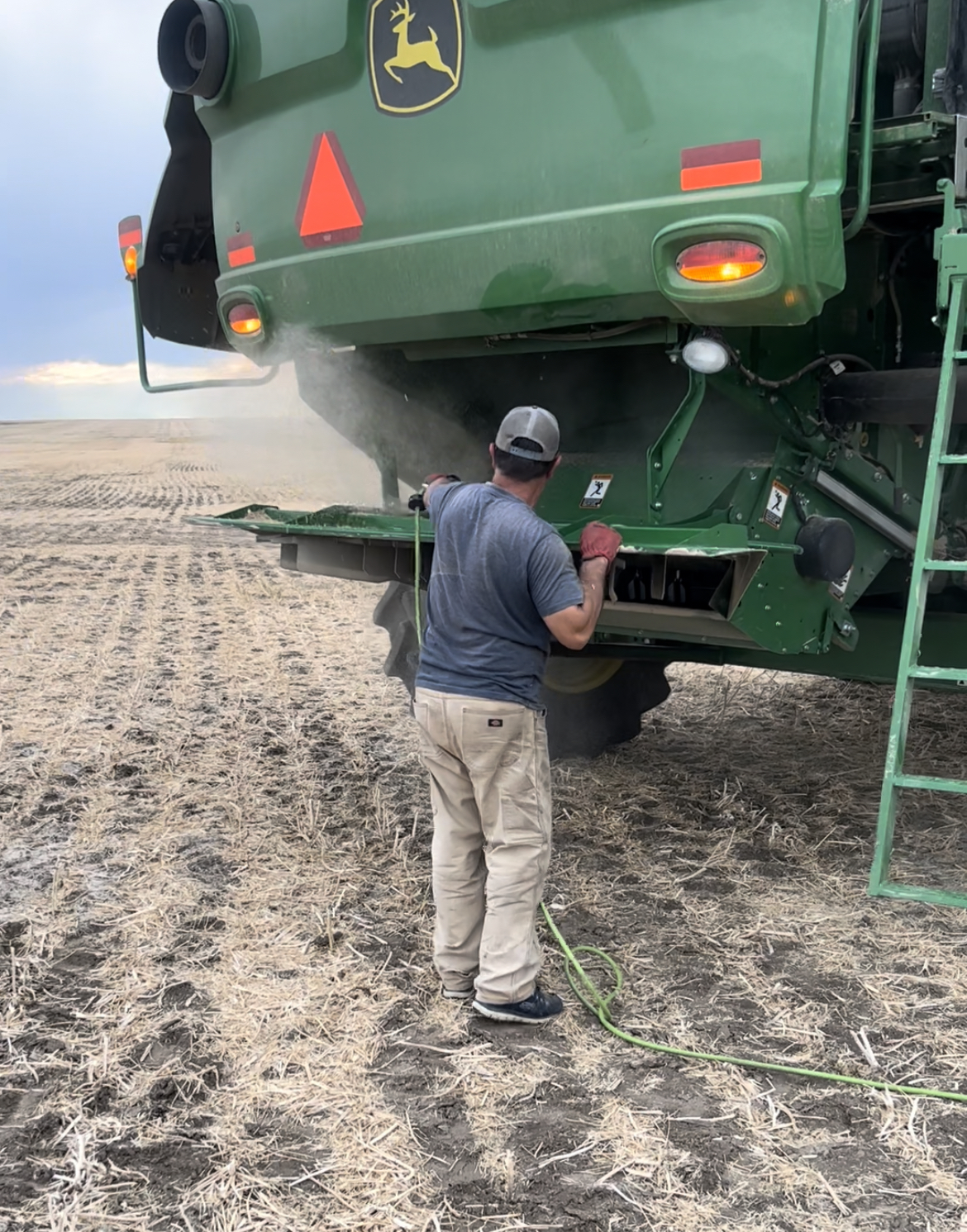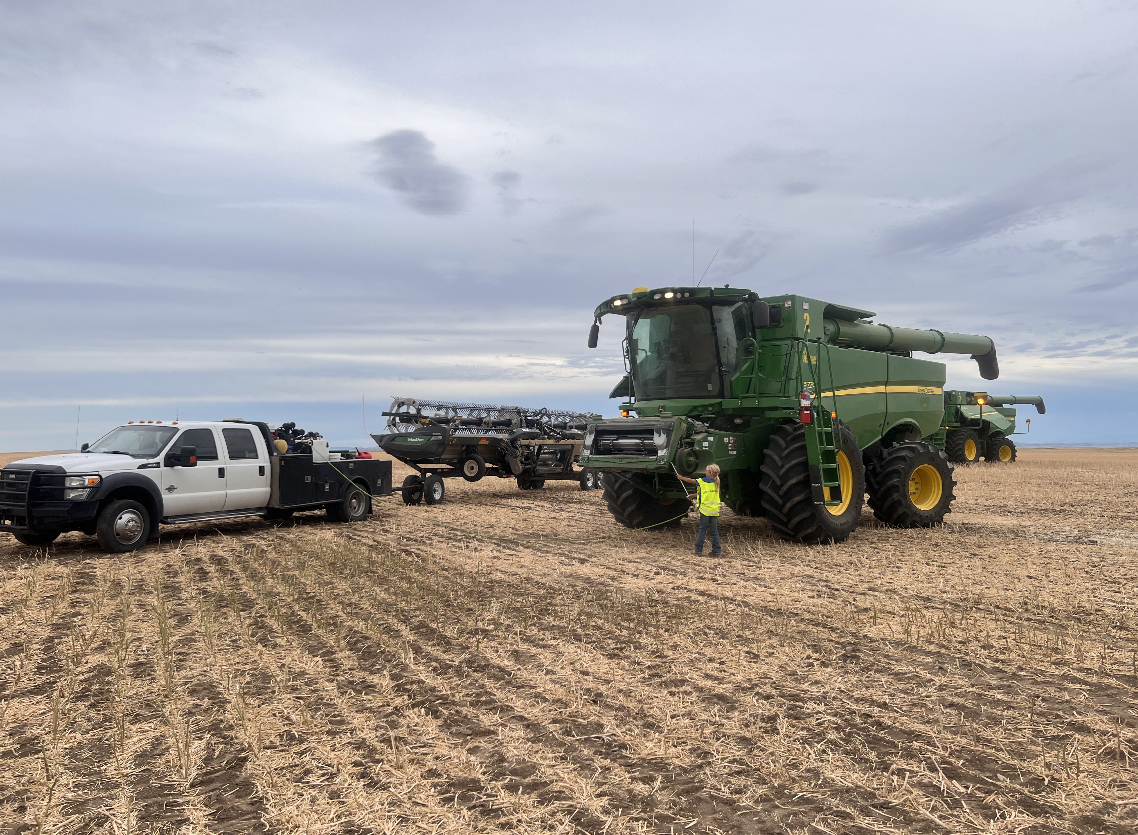25 Aug Laura: Canola and chickpeas
Montana—On Sunday, Aug. 14, I was typing the beginning of this article from the back of the pickup on the way to the field, on what should be our final hours in southern Montana. Yesterday, half of the machines in Montana made the pilgrimage to our final stop of the season northwest of Great Falls. The remaining team members will join them tomorrow, God willing.

Hard to get tired of this backdrop.

Beautiful canola fields.
The crew has spent nearly three and a half weeks harvesting a variety of crops east of Billings. The finals days were spent in canola and chickpeas, two crops whose seeds could hardly be more different. Canola seeds are tiny black seeds and chickpeas are a lighter, large seed.

Look how tiny the canola seeds are.

Here is what a chick pea looks like.
Seed size is important to keep in mind when harvesting these crops, but, interestingly enough, the same equipment can be used in all the crops here, with slight modifications.
One modification we need to consider is what concave we can use. Concaves are located underneath the rotor of the combine. The easy, short explanation is the rotor rubs the harvested plant against the concaves to separate plant matter from the grain. The grain falls passes through the concaves and is housed in the grain storage tank and the rest of the unwanted plant material exits the back of combine. We used round bar concave for the chickpeas and were able to use small wire concave for wheat and canola. Other things that have to be considered are rotor and fan speeds, which can be adjusted by a touch of a button from the cab. In canola, lower rotor and fan speeds are needed, because the seed is so light at 50 pounds per bushel. Chickpeas are larger, heavier and have settings that are more similar to a soybean set up.
Canola yields were good for the area at 30 to 45 bushels per acre. We binned the canola so there are not additional stats for the crop. However, the crop was nice and dry, stood well and was very thick. The harvestability of the crop was very high which certainly makes for more enjoyable days for the combine operators. The chickpeas on the other had were subjected to the terrible hailstorm I’ve mentioned several times now. Their yield was closer to 20 bushels per acre.
The crew had just finished the final field of the job when we reached the field. I served a new meatball and mash potatoes casserole and a distant rain shower made for a stunning backdrop against the mountains. The kids tried to “help” the crew blow off machines while they ate. The kids and I were tasked with moving the fuel trailer. It took all hands on deck to make the long drive back to the farm where we would load equipment and prepare for the trip to the northern part of the state. It was nearly dark by the time the last combine rolled into the yard and we were treated to an incredible sunset for our last night in the area.

Showers were off in the distance but went around us.

Pablo blowing off the dust.

Lady A trying to help.
Breeno cleaning off his combine.
One advantage to loading at night is that it is much cooler. The temperatures have been so hot here like many parts of the country. The disadvantage is the mosquitos about carried us away. Tan skin shimmered in the headlights with the amounts of OFF that was used. If it’s not mosquitos, it is the aggressive flies which draw blood when they bite. The little rascals can even bite through socks. Oh well, I suppose I’ll take them if I have to because it means there’s been some rain in the area. Back home I hadn’t hardly seen any because the drought is so bad. So, a few bites is a small price to pay for good crops.

What a sunset. This iPhone shot doesn’t even begin to do it justice.

Loading the combine on the trailer.
Laura Haffner can be reached at laura@allaboardharvest.com.
All Aboard Wheat Harvest is brought to you by ITC Holdings, CASE IH, Oklahoma Baptist Homes for Children, US Custom Harvesters Inc., Unverferth Mfg. Co. Inc., Lumivia CPL by Corteva Agriscience, Kramer Seed Farms, and High Plains Journal.

Sorry, the comment form is closed at this time.